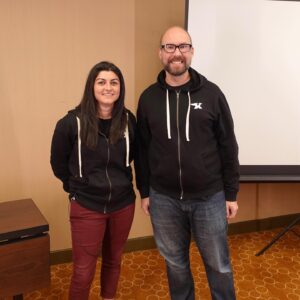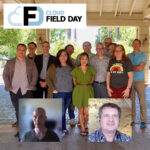|
|
 Yasmin Rajabi and Brian Likosar presented for StormForge at Cloud Field Day 15 |
Rightsizing Kubernetes Apps and Optimizing Resources at Any Scale with StormForge ML
Watch on YouTube
Watch on Vimeo
Cloud waste and operational inefficiency are significant Kubernetes problems that span pre-production, day 2 operations and beyond. The chronic inability to rightsize application resources in complex Kubernetes environments leads to excessive – yet ineffective – manual tuning, gross over-provisioning and unpredictable performance. These outcomes steal time from engineering innovation, generate unnecessarily high cloud costs and create performance and availability risks that degrade the user experience.
This session provides an overview of the StormForge platform, which uses patent-pending machine learning to drive intelligent insights and automatically rightsize Kubernetes resources at any scale. StormForge uses rapid experimentation and scenario analysis to optimize non-production environments and leverages existing observability data to optimize production. The benefits are significantly lower administrative effort and cloud costs, and more predictable SLAs.
Presented by Brian Likosar, Director of Global Solutions Architecture, StormForge.
StormForge Demo: www.stormforge.io/request-demo/
StomForge Free Trial: www.stormforge.io/try-free/
Personnel: Brian Likosar
Kubernetes Autoscaling without Compromise: A Bi-Dimensional Approach from StormForge that Works
Watch on YouTube
Watch on Vimeo
Predictable, optimized scaling is a challenge that requires trade-offs in Kubernetes environments today. The Kubernetes autoscalers enable horizontal and vertical autoscaling, but it’s not easy for them to work together. This leads the vast majority of organizations to use Horizontal Pod Autoscaler only, with arbitrary CPU values determining the scale point. And for the VPA to work with the HPA, custom scaling metrics other than CPU and memory must be used.
This session explains how StormForge enables bi-dimensional pod autoscaling to address these limitations, enabling simultaneous use of HPA and VPA. It accomplishes this by issuing ML-based CPU and memory recommendations for VPA while setting the optimal CPU thresholds for HPA. Now organizations can autoscale more efficiently to minimize wasted resources and unnecessary cloud expense.
Presented by Brian Likosar, Director of Global Solutions Architecture, StormForge.
StormForge Demo: www.stormforge.io/request-demo/
StomForge Free Trial: www.stormforge.io/try-free/
Personnel: Brian Likosar
StormForge Case Study: Optimizing K8s Autoscaling for Growth and Cost-Efficiency
Watch on YouTube
Watch on Vimeo
The SaaS company in this case study had been scaling to accommodate business growth but soon found itself vastly over-provisioning Kubernetes resources and facing 40% annual growth in cloud spend, which was cutting into its margins. The firm adopted Kubernetes horizontal pod autoscaling (HPA), but found it challenging to scale workloads that were prone to bursts. With literally thousands of tuning combinations spanning numerous workloads, its optimization process required tremendous effort and cost, but still resulted in lukewarm results.
The business moved forward with a StormForge POC in an attempt to improve the efficiency of their horizontal pod autoscaling and also to introduce pod right-sizing (i.e. vertical pod autoscaling). The goal was to reduce over-provisioning costs and tuning efforts without sacrificing reliability or application performance. For its POC the firm deployed StormForge Optimize Live on a single app and realized an immediate cost savings of approximately 60%. It is now planning to use StormForge to scale efficiently across all production and non-production Kubernetes apps.
Presented by Yasmin Rajabi, VP of Product, StormForge.
StormForge Demo: www.stormforge.io/request-demo/
StomForge Free Trial: www.stormforge.io/try-free/
Personnel: Yasmin Rajabi








